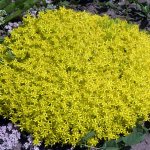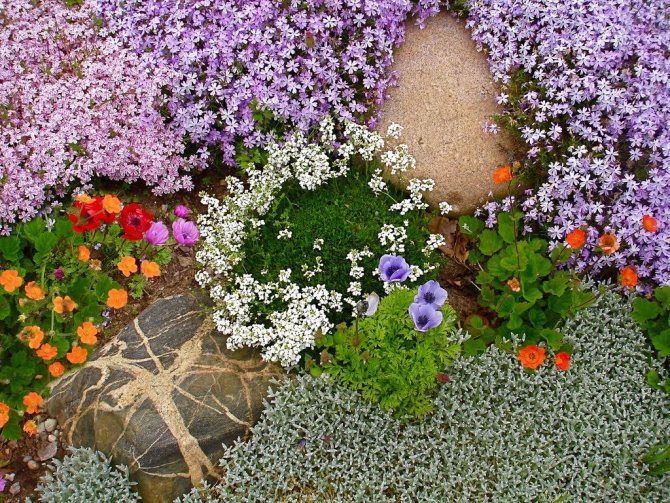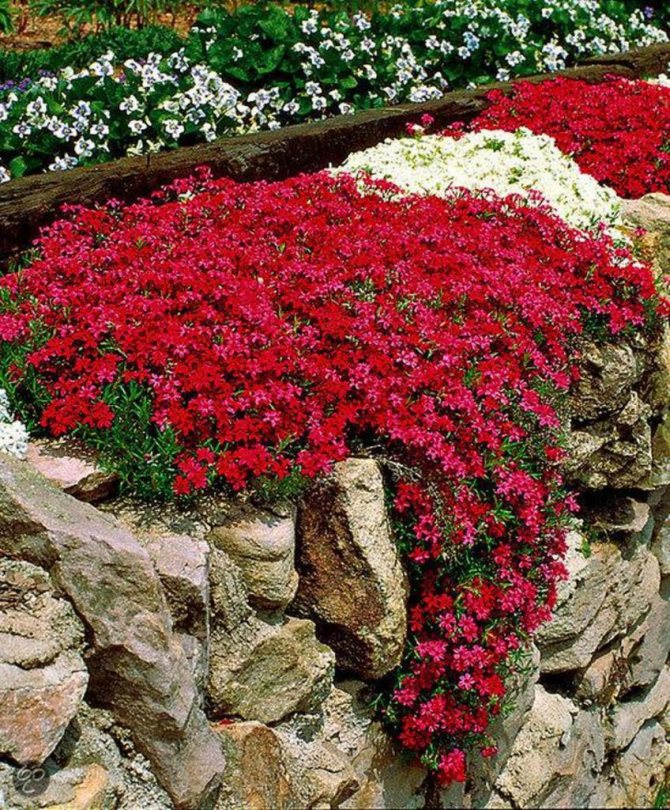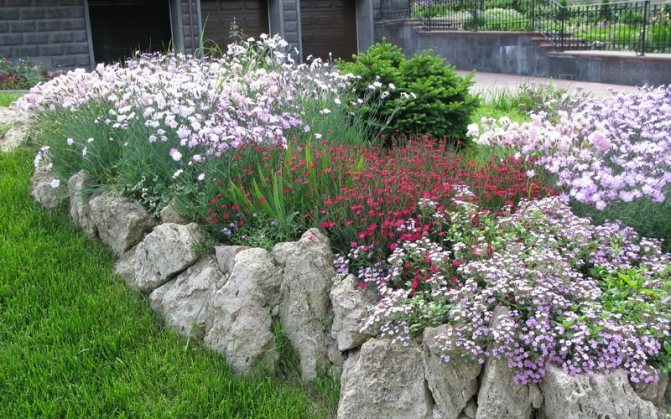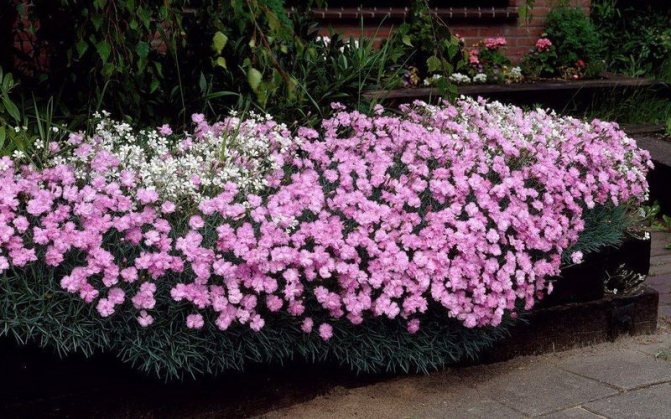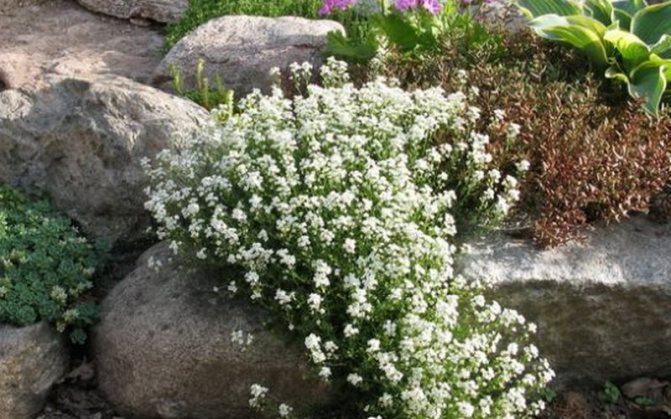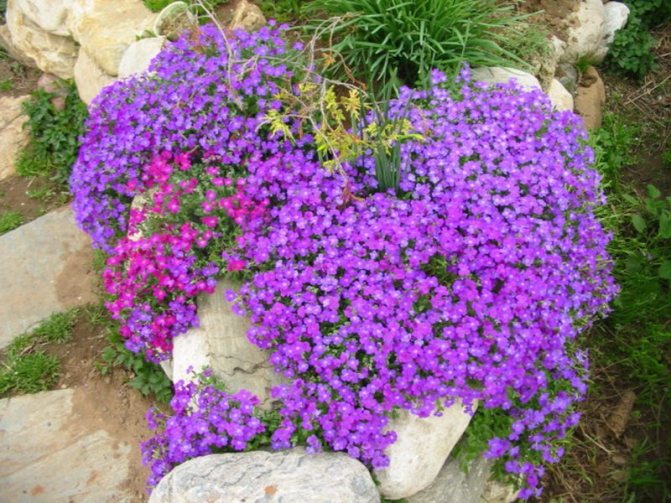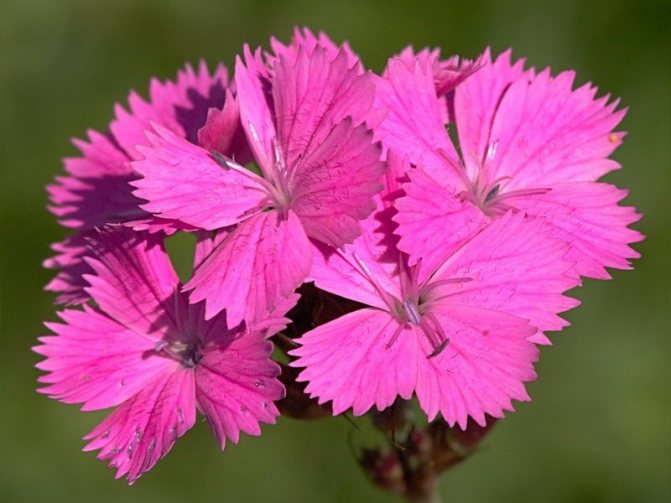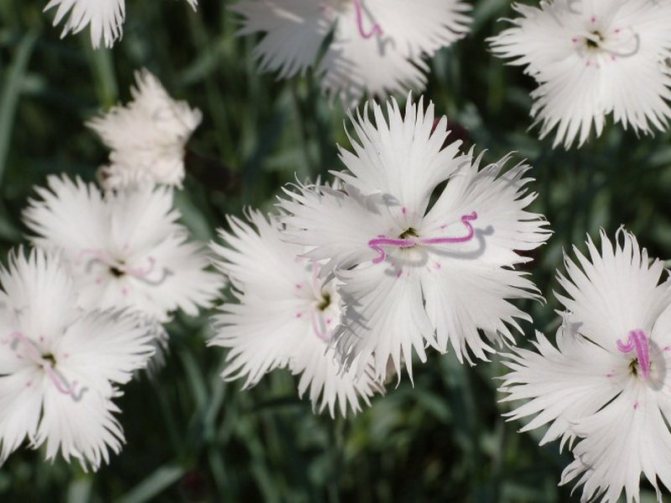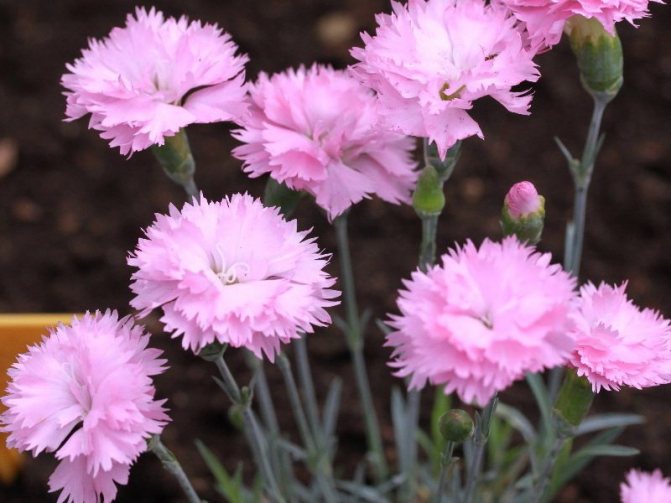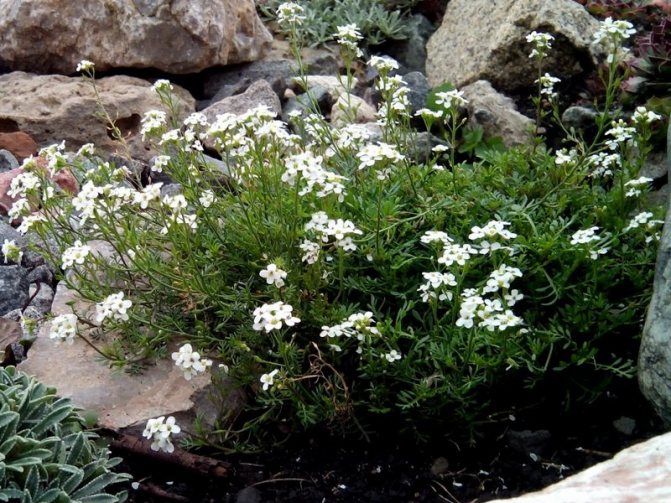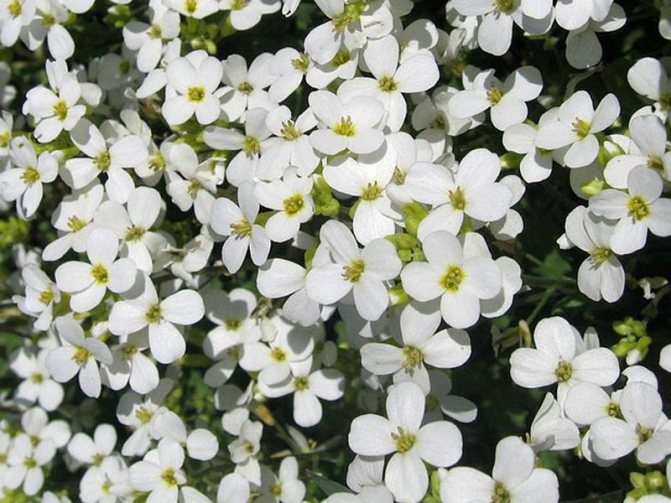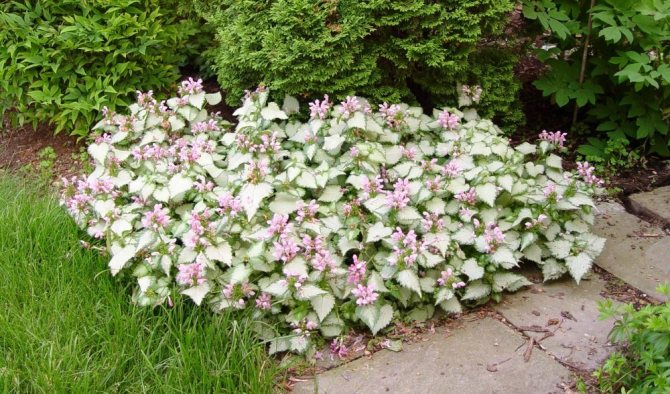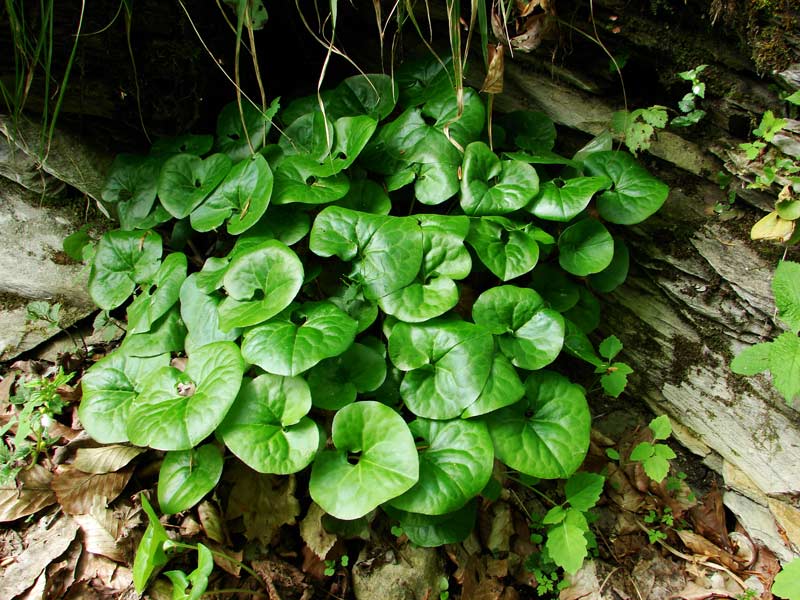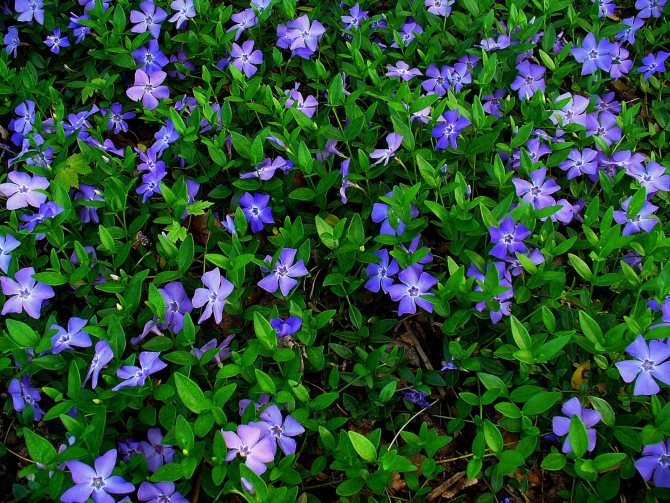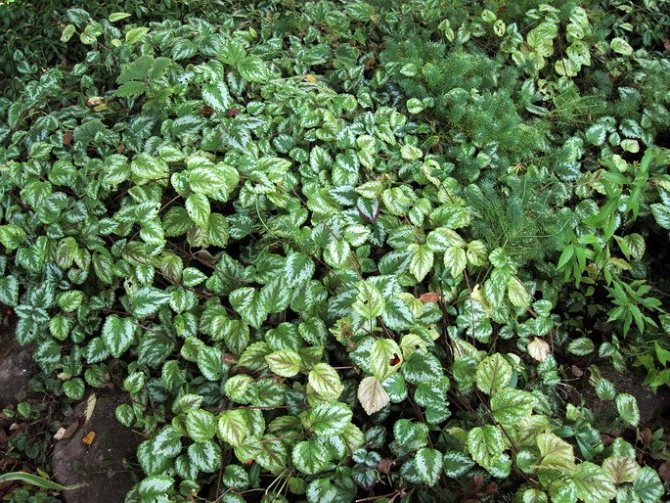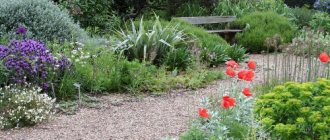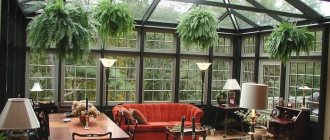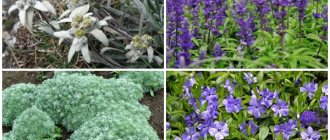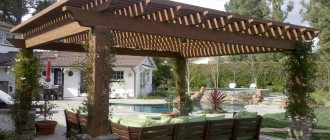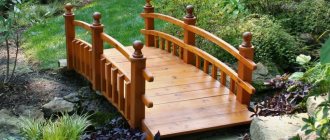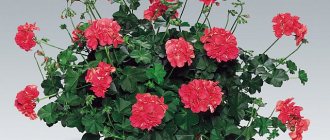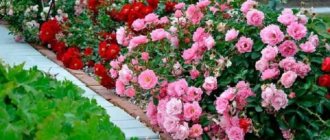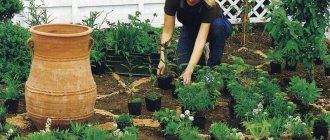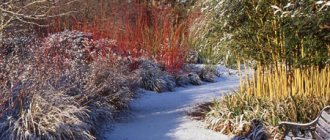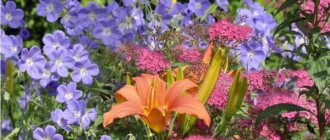Every gardener will love groundcover perennials. These self-growing plants do not need to be cared for carefully. They will be a decoration for the garden and will be useful.
These are the most unpretentious perennials. Such flowers love the sun, but at the same time remain shade-tolerant. They will prevent the soil from losing moisture and protect it from erosion. The microclimate in the area with these plants will be regulated. The ground cover garden looks neat and clean. Thanks to them, gardeners do not often have to weed and loosen the soil.
Varieties of ground cover perennial plants
It is very beneficial for a garden and a summer residence to have perennials covering the soil. These beautiful flowers with muted greenery and delicate flowers are graceful and unobtrusive. The landscape will look perfect with them.
Paths, alpine slides, rockeries and even flower beds with ground cover flowers look wonderful. Gardeners affectionately call them mosses, rugs and pillows. There are many types of these plants.
one . Sedum
Stonecrop, which is also called sedum, is well suited for a garden and alpine slides. This unpretentious representative of ground cover is not afraid of heat, drought and spreads well over stones and earth during the growth process.
Numerous and abundant stonecrop flowers have strong inflorescences. Its creeping varieties will create neat and attractive rugs on the site. The leaves of this plant are practically invisible due to its dense flowers.
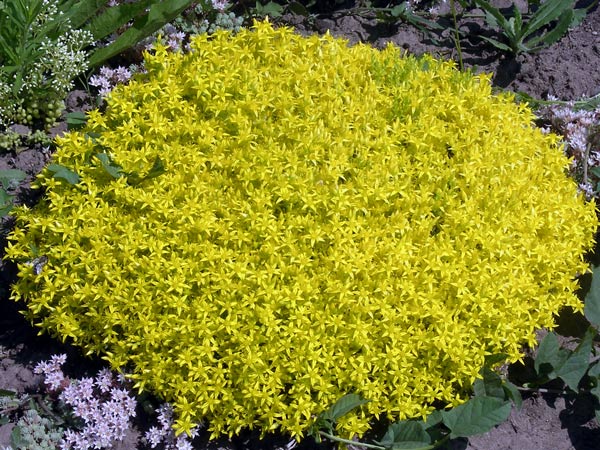
Sedum caustic
The semi-shrub variety of sedum is widely used to decorate lawns, flower beds, ground vases and rockeries. Such sedum looks gorgeous and planted along the paths.
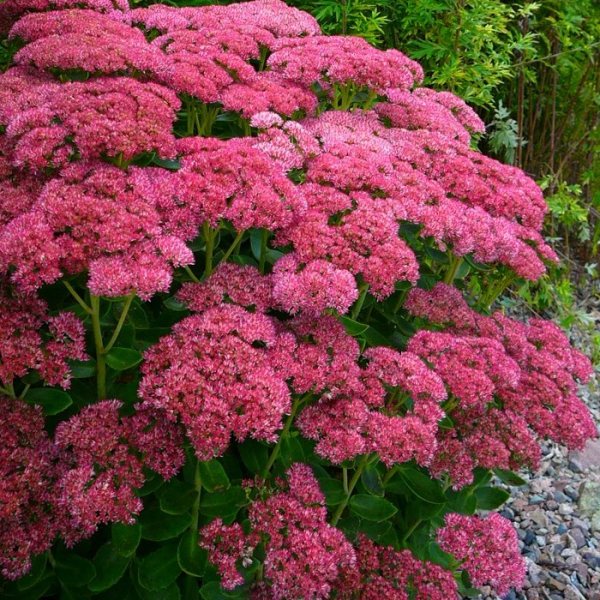

Sedum prominent
Arabis


Arabis
Arabis or rezuha, blooming in May, will also decorate garden plots and rockeries with their cascades falling from the retaining walls.
Rejuvenated


Rejuvenated
Rejuvenated, which is also called a stone rose for its structure, will also decorate a summer cottage well. It is often planted in garden pots, combining several types of plants at once. Non-nutritive soil is more suitable for rejuvenating. The plant will thrive better in the sun than in the shade. This perennial does not need watering.
Ducheney
The Indian duchenea, so reminiscent of strawberries, is a shade-loving plant. It blooms yellow, from which inedible berries are obtained. She is used to plant trees on slopes, lawns, tree trunks, as well as inconvenient garden areas.
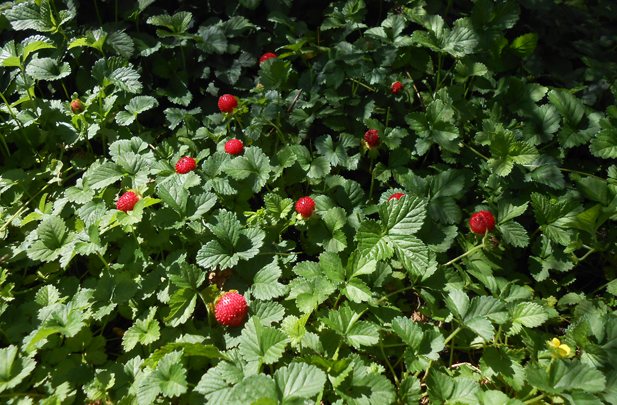

Ducheney
Carnation herbal
Semi-shrub tender carnation, which has several varieties, can be planted singly or in combination with its other types, in the middle of sand, gravel and pebbles. Perfect lighting and damp ground are ideal conditions.
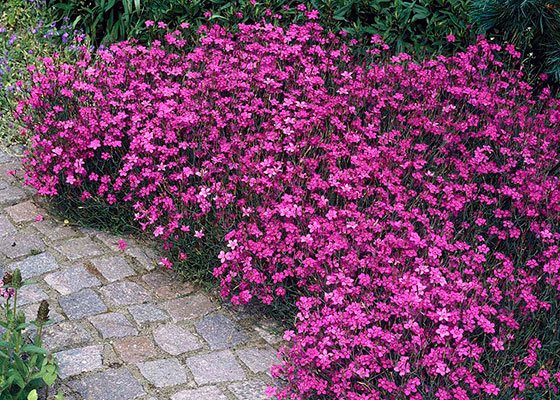

Carnation herb is frost-resistant, loves the sun and dry sand. If you plant it in the shade, then it will not even bloom there. Miniature grass is good for decorating rock gardens, paths and lawns. It will also be a great addition to decorative stones and garden sculptures.
Aubrietta
Long-flowering Aubrietta will feel great only on dry ground and in the sun, otherwise its bushes will fall apart and not bloom. When planting this ground cover perennial, it is necessary to pour dolomite flour and sand into the ground, and also create expanded clay drainage for it. In dry and hot weather, the obrietta is watered.
Aubrietta
It is usually planted near artificial streams and reservoirs, as well as in garden flowerpots and rock gardens, giving preference to sunny places and light fertile lands. There should be sand, lime or chalk in the soil. For the winter, the obrietta is covered with dry leaves or spruce branches.


After it fades, it is recommended to cut off its peduncles, which will stimulate re-flowering and regrowth of shoots. After cutting the flowers, it must be fed with mineral complexes. Aubrietta is divided in the spring for reproduction, and is also cut or planted with seeds.
Silver lamb
A silvery laskolka with fluffy leaves and white umbrella flowers is grown in sunny areas with any land. It takes root well near a reservoir, on a lawn without grass and an alpine slide. For greater decorativeness, it is better to plant the plant abundantly.
Silver lamb
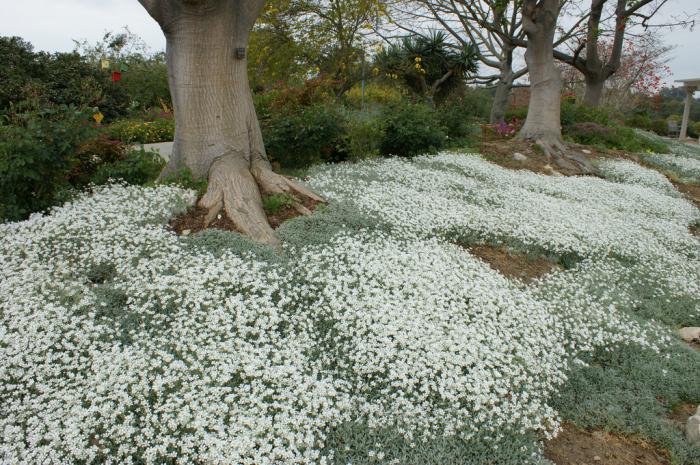

Felt splinter
Spicy flavoring plants
Many of them cover the ground well, creating a green carpet. Healing tea can be brewed from medicinal and fragrant sage, rosemary, oregano, mint and lemon balm planted in the garden. Their beautiful bloom can often be seen both along the paths and in the flower beds.
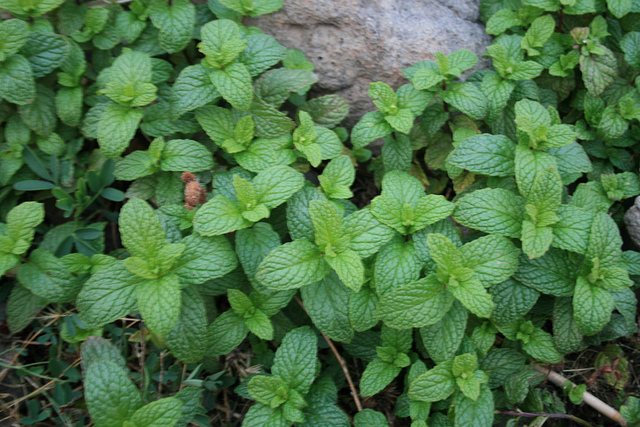

Mint
Tenacious creeping
The tenacious creeping with oval cherry-colored leaves and bluish flowers in the form of an ear will be a godsend for paths and lawns without grass. It will only need to be planted, and you will not even have to worry about the rest of caring for it - nature will take care of it itself. In a rock garden, this plant must be monitored all the time so that it does not suppress other flowers.


Tenacious creeping
Sedum
Experienced gardeners call this undersized perennial a real find for a garden or rock garden. The fact is that sedum, as sedum is also called, boasts lush creeping carpets, abundant flowering and a variety of varieties. So, sedum Evers at the very beginning of July is covered with delightful pink inflorescences, thick-leaved sedum dissolves snow-white flowers already at the end of spring, while the height of dense thickets usually does not exceed two centimeters. There are other varieties:
- acrid sedum, which is usually about 8 cm high, pleases gardeners with small leaves, green and pink "stars" that bloom in late spring;
- spatulate sedum allows you to create a carpet 7 centimeters high that looks truly magical - neat rose leaves, yellow flowers of saturated light;
- stonecrop can boast of the fact that crimson flowers bloom on it at the beginning of September; this ground cover plant is characterized by flat leaves with a bluish bloom, neat descending shoots;
- stonecrop blooms throughout the summer, it has small oblong leaves and rich yellow inflorescences;
- a very interesting hybrid sedum false, its leaves are painted in a variety of shades of green, and the buds can be pink, red and white.
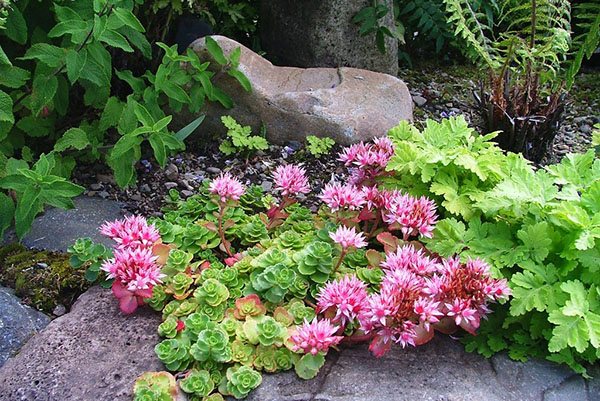

Beds of ground cover: rezuha, periwinkle, loosestrife, young
Ground cover pillows and rugs have become very fashionable among summer residents and gardeners. Flowerbed with cuts is a spectacular double cascade of flowers and leaves of the plant. Such flower beds are located in a small shade or in the sun, where the cesspool will bloom profusely and grow well. Propagated by cuttings, layering and seeds.
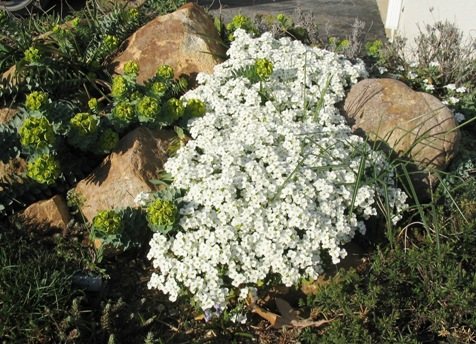

Well growing periwinkle its flowers are similar to phlox. It will bloom profusely in the sun, grow in the shade.By its growth, periwinkle displaces weeds. It will be good for him on the rocks and in the shade.


Coin loosestrife or meadow tea on a flowerbed in the form of a flowerpot is also very effective. And compositions with a point plant are placed on paths and rock gardens.


Various rejuvenatedplanted in the same flower bed look very good without flowering. Their amazing leaves in different colors are simply amazing.
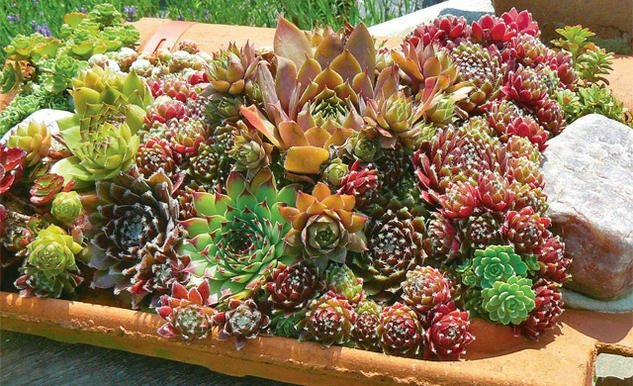

Palmist
Thinking about what you can plant instead of a lawn? Pay attention to creeping flowers such as the palm. Kotula (this is how the second name of this plant sounds) is especially popular among gardeners for a reason: it pleases the eyes with delicate yellow flowers that emit a delightful aroma throughout the summer. The neat glossy leaves of the plant contrast with the inflorescences. The most common cootula are comb, rough and cinquefoil. Their height does not exceed ten centimeters. Landscaping experts say: this plant can get lost in a flower bed, it is best to plant it in rocky areas or as a lawn.
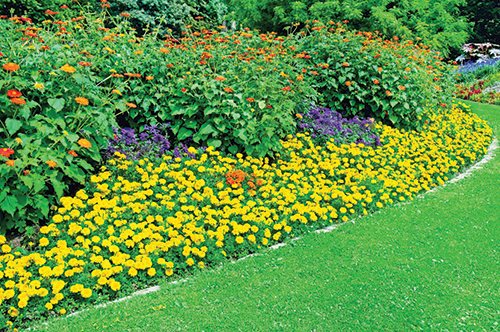

Groundcover and natural stone
Gardeners simply love to combine ground cover plants with natural stones, creating unique and very beautiful rock gardens.
A herbal carnation, for example, will grow among the stones in the form of neat cushions. Its small and bright flowers can be diluted with a lush carpet of rock alyssum. The top of an alpine slide is usually decorated with creeping thyme. Bees and beautiful butterflies will flock to its aroma. Alpine edelweiss should become the main decoration of a stone flower garden. The fleshy juvenile is also a frequent inhabitant of the boulders.
The middle part of the rock garden is planted bright phloxes, cultured shawls, woolly purses, monotonous sunshine, common lumbago and unpretentious stonecrop.
Ground cover perennials will not need to be replanted every year and transferred somewhere for the winter. Plants such as resin, lumbago and dwarf bell, who do not like stagnant water, are planted in narrow deep cracks. Creeping phlox, bergenia and rejuvenated themselves are able to protect the ground from erosion. Sheer rocky walls will decorate falling bells, soapworms, lobelias and alyssums... It is better to alternate plants with each other, planting them in groups.
Ground cover perennials are the basis for rock gardens and rockeries. They form neat cushions and colorful carpets between the boulders. Compositions with them are more voluminous. Preference, of course, is given to sedum, yaskolke, obrietta, young and saxifrage.
Ground cover plants harmonize very well with other flowers: forest trees, tulips, daffodils, crocuses and snowdrops. Bells, veronica, verbena, seaside lobularia, styloid phlox, purslane and alyssum they also coexist quite well among natural stones and with conifers. Thus, a rocky microlandscape can become a highlight for any garden.
Looks great with stones undersized gentian with purple, white or blue flowers. It will be especially good for her in the shade and with cereal grasses.
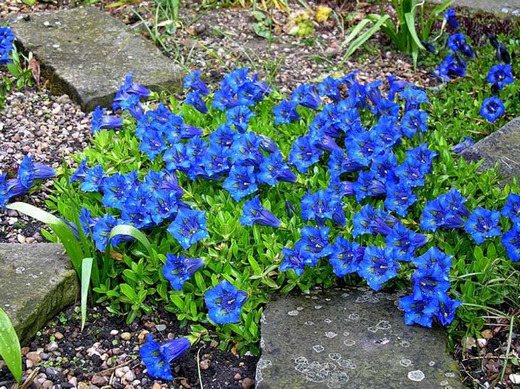

Gentian
Just as good and thyme, which is also called Bogorodskaya grass or thyme. Its abundant white, purple or purple inflorescences love sun and light limestone soils.
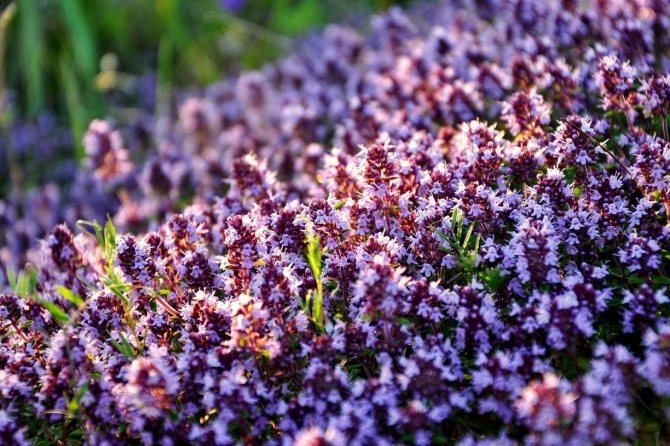

Thyme, "Bogorodskaya grass"
In the photo below saxifrage among the stones it forms an attractive and original moss mound. This plant seems to break through huge boulders, making its way through the cracks. She revives the stones with her appearance.
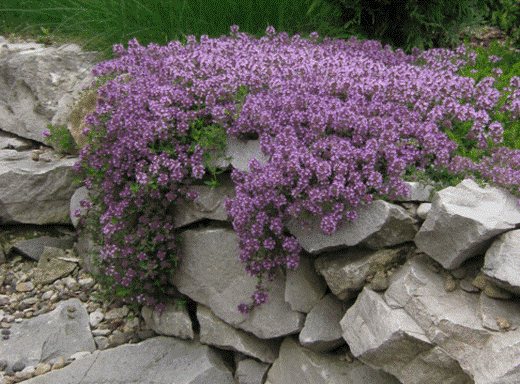

Saxifrage
Exotic creeping juniper here refreshes the stone landscape quite well. The carpet from this plant sets off well the gravel covering of the garden.So, even this coniferous representative turned into a ground cover subspecies.


Looks good among the stones and decorative ivy budra... She is undemanding and loves shade.


Ivy budra (catnip).
Subulate phlox
These ground cover flowers can reach a height of 16-20 centimeters, they form a rather dense and dense carpet of green color with surprisingly bright inflorescences of various shades: flowers can be red and crimson, white and purple. Subulate phloxes usually bloom twice a year. The first time they open their buds at the very end of April. Flowering continues until mid-summer. The second bloom begins in September. These ground cover plants in landscape design, according to gardeners, are universal - they can replace a lawn, phlox look great on alpine slides, as borders along garden paths.
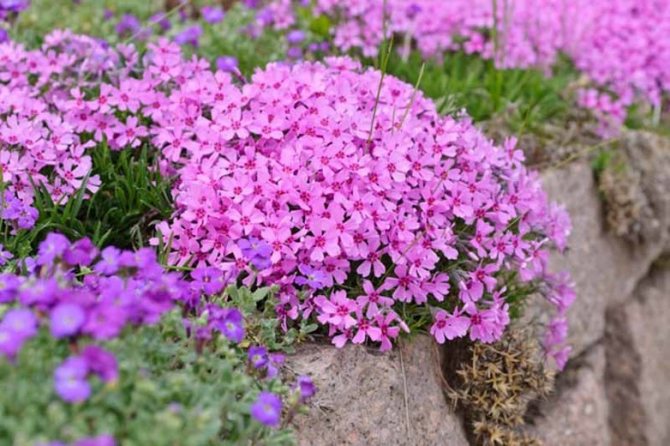

A selection of photo ideas for a flower bed with ground cover
Paths can look very original with these plants.
Framing paths is generally one of the most popular applications for ground cover plants. They seem to act as a frame for a picture.
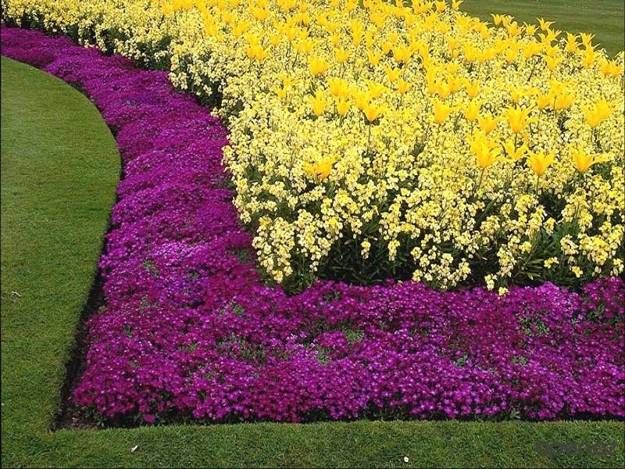

Ground cover plants are very good for realizing geometric shapes on a plane.


At the same time, they can be used to decorate vertical or sloping surfaces.
Above described aubrietta is used here.


Saxifrage
If your site is in the shade, you should choose shade-loving groundcover. These include the unpretentious beauty saxifrage. She is able to survive even in the harshest conditions: she can be found at the foot of the mountains, on rocks and embankments! This plant got its name not by chance, the whole point is that the saxifrage settles in the smallest cracks of stones and gradually destroys them with roots! Saxifrage blooms in May, flowering continues throughout the summer. Flowers are usually white, but there are varieties with yellow, pink and red inflorescences.


Creeping shard
A perennial groundcover that blooms all summer with creeping shoots, about 15 cm high, forms many small white flowers that bloom in early May. The chrysalis is very easy to care for and also able to withstand low temperatures.
The plant grows rapidly and expands over a large area in a short time. It is not difficult to get a chick from seeds by planting them in spring or winter for seedlings. But it will bloom only next year.
The basic requirements for growing are simple:
- Grows best in sunny locations.
- It is recommended to use soil that is rich in minerals for planting.
- Abundant watering.
- The plant does not require fertilizers or feeding.
- After pruning the shoots after flowering, a second flowering can be achieved.
- Propagated by dividing bushes and cuttings in late spring.
- For the winter it is covered with spruce branches.
Features and description of roses Pierre de Ronsard
Arabis
Another rather hardy plant: Arabis is not afraid of either drought or cold weather. The length of the lash of this perennial usually reaches 50 centimeters, the delightful emerald foliage is adorned with neat bright inflorescences, among the most common shades of white, cream, pink and lilac. Flowers can be either double or simple, collected in dense inflorescences. A fragrant carpet pleases gardeners for a whole month.
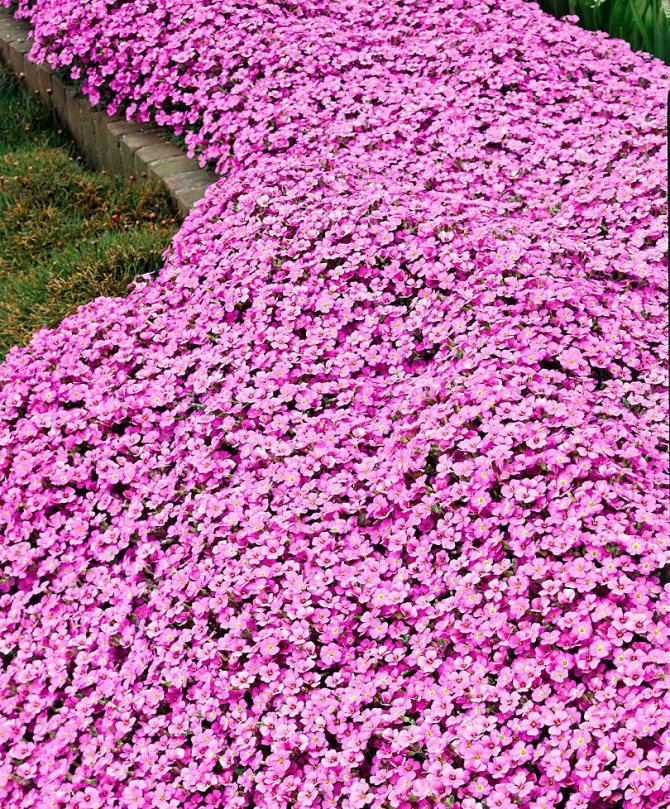

Low-growing ground covers
The height of such plants does not exceed 0.2 m, and therefore they are ideal for decorating rock gardens, rockeries and other stone compositions. These "rugs" look good with coniferous shrubs or tall flowers.
What about the price
The homeland of this evergreen perennial is Australia, Chile and New Zealand. The ground cover loves rocky areas, grows up to 15 cm in height. The leaf plates are ovoid, finely serrated at the edges, cast with a metallic sheen.Inflorescences are spherical, after flowering they are covered with multi-colored needles.
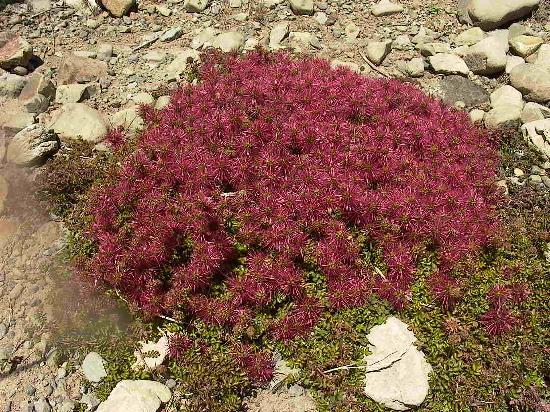

Acene soil cover loves rocky areas
Loose mint
The plant feels comfortable near water bodies or in wet areas. The length of the creeping stems is from 0.2 to 0.6 m. The leaves are coin-shaped, opposite, silky to the touch. The loosestrife blooms continuously, with simple lemon-yellow inflorescences. Resistant to trampling.
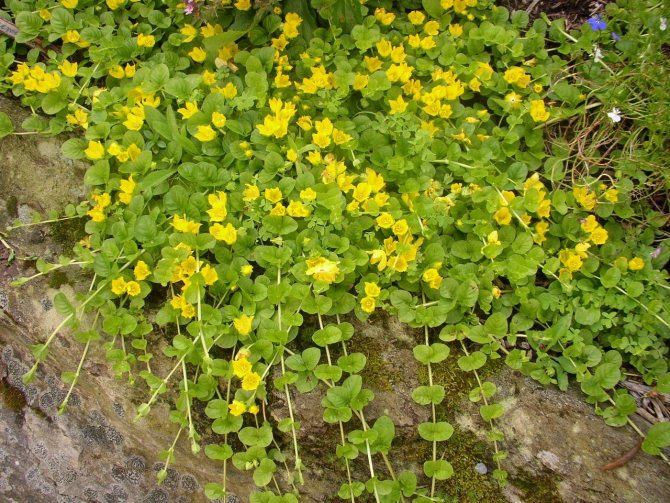

Loose leaf blooms continuously
Veronica
A very common ground cover that grows in the temperate climatic zone. Creeping stems are very long, sometimes up to a meter in size. The leaf plates are dark green, cordate, with jagged edges. The surface is covered with fine nap. Flowers of a simple type of structure, forget-me-not shade.
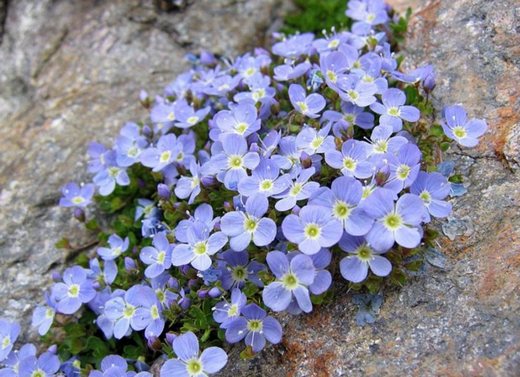

Veronica grows in a temperate climate zone
Bryozoan
The natural range of this plant is the Northern Hemisphere. The height of a perennial, similar to Irish moss, is 15-20 cm. The leaves are very narrow and small, bright green. Inflorescences are tiny, snow-white, densely cover the entire "rug". During flowering, bryozoan emits a delicate light aroma.
Omphalodes, or umbilical
These flowers came to us from the forests of Southern Europe and the Caucasus. Such a "rug" grows no higher than 0.2 m, and after flowering it throws out "antennae" like strawberries. Leaflets are ovoid, elongated, with a pointed end, light green in color. Inflorescences are small, bright blue in color with a white core.
Creeping thyme, or thyme
A perennial perennial ground cover with a height of 15-20 cm, which is found throughout Eurasia. Over time, flexible stems are covered at the base with a tough bark. The leaves are elongated, oval. Inflorescences are small, lilac-lilac, sometimes with a pinkish tinge. At the end of flowering, dark brown berries form in their place.
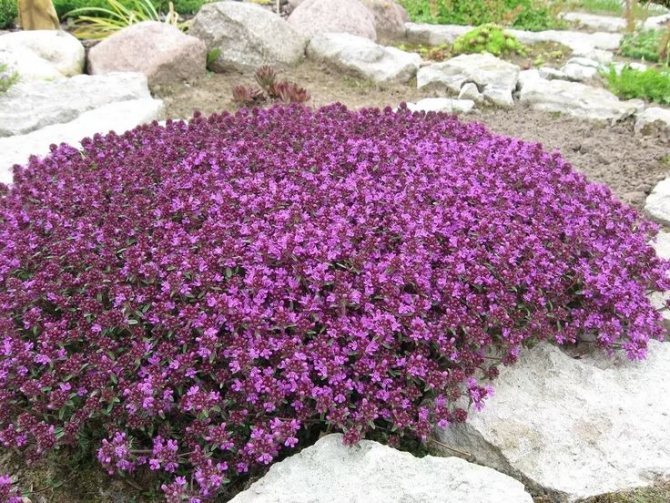

Creeping thyme, or thyme
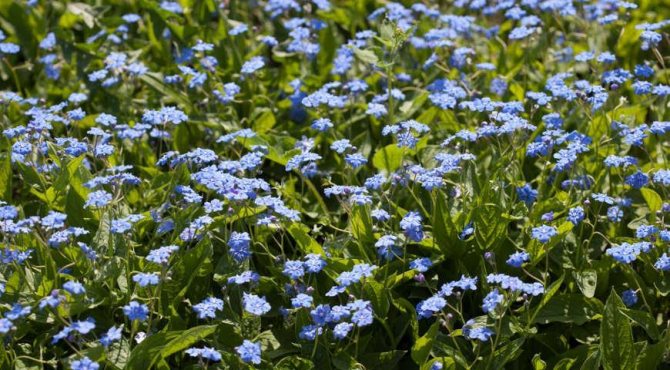

Omphalodes, or umbilical
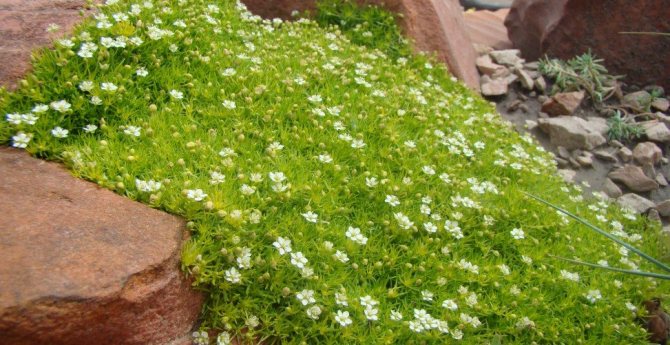

Bryozoan
Phlox subulate
This plant, which came to us from North America, has many species. The length of its stems ranges from 15 to 50 cm. Growing, the perennial forms a dense, brightly blooming rug. The leaf plates are lanceolate, dark green. The inflorescences are simple, consist of five petals. The color is varied.
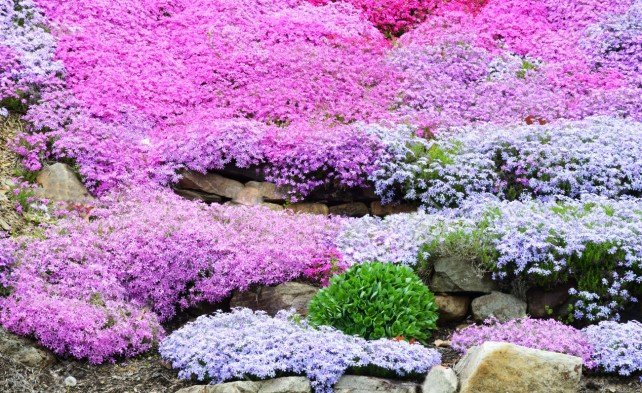

Phlox subulate has a varied color
Care rules
Gardeners recommend choosing exclusively sunny areas for this culture. The fact is that partial shade can lead to a decrease in flowering splendor and growth retardation. But this plant is not afraid of drought and heat, drafts are not afraid of it either, because the chickweed is rather low - only 20 centimeters. The soil for it should be both nutritious and loose, it is best to choose a soil based on sand, in which humus and compost must be added. Even in the middle lane, this plant does not need additional shelter for the winter, it belongs to the category of completely winter-hardy. Caring for chickweed is quite simple: during the summer season, it is necessary to apply mineral fertilizers twice, in the spring, shoots that are knocked out of the pillows should be removed.

